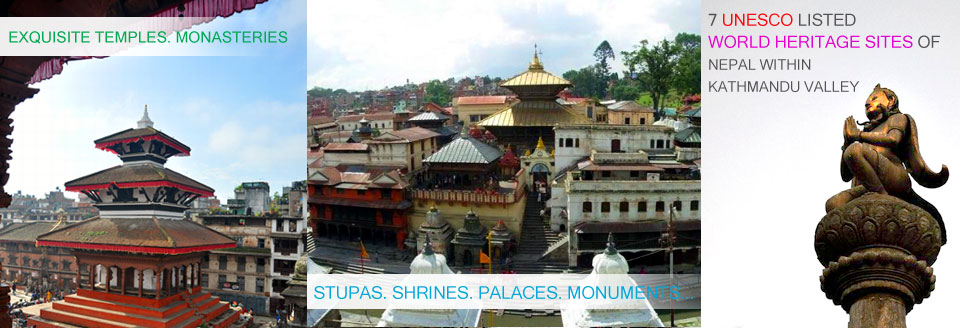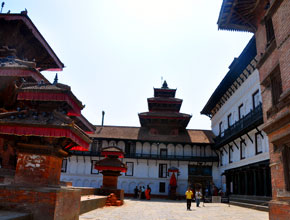










KATHMANDU DURBAR SQUARE
Kathmandu Durbar Square in the heart of old Kathmandu city in Basantapur never fails to impress first time visitors with its intricate wood carvings and rich history. Surrounded by concrete buildings, the complex is an oasis in a fast developing, chaotic modern city. Once the residence of Nepal's Royal family, all coronation ceremonies were held here. The palace is an amalgamation of eastern and western architecture with additions by Rana and Shah rulers over the centuries. An unbelievable 50 temples lie within the vicinity including the temple of the titular deity, Taleju Bhawani. The Durbar is divided into two courtyards, the outer Kasthamandap, Kumari Ghar, and Shiva-Parvati Temple, and the inner section consisting of Hanuman Dhoka and the main palace. Some floors have been converted to museums dedicated to three generations of Shah kings. Most parts of the palace premises are open to tourists throughout the week.
Some important monuments to see in this area are:
The Taleju Temple is the tallest of all structures, built by King Mahendra Malla in 1549 AD. This temple is open to the public for one day each year during the Dashain festival.
The Jagannath Temple, built in the 16th century is known for the fascinating erotic figures carved on the wooden struts.
The Kal Bhairav, one of the largest 17th century stone statues in Kathmandu, representing the terrifying aspect of Lord Shiva.
Swet-Bhairav - the temple is open to the public once in year during Indra Jatra Festival. The 17th century Kumari Temple (the temple of Living Goddess) is an example of highly developed Nepali craftmanship.
Kaandasthamp, from which Kathmandu derives its name, is said to have been built from the timber of a single tree.
Nautalle Durbar (the nine storyed palace)














